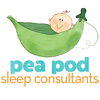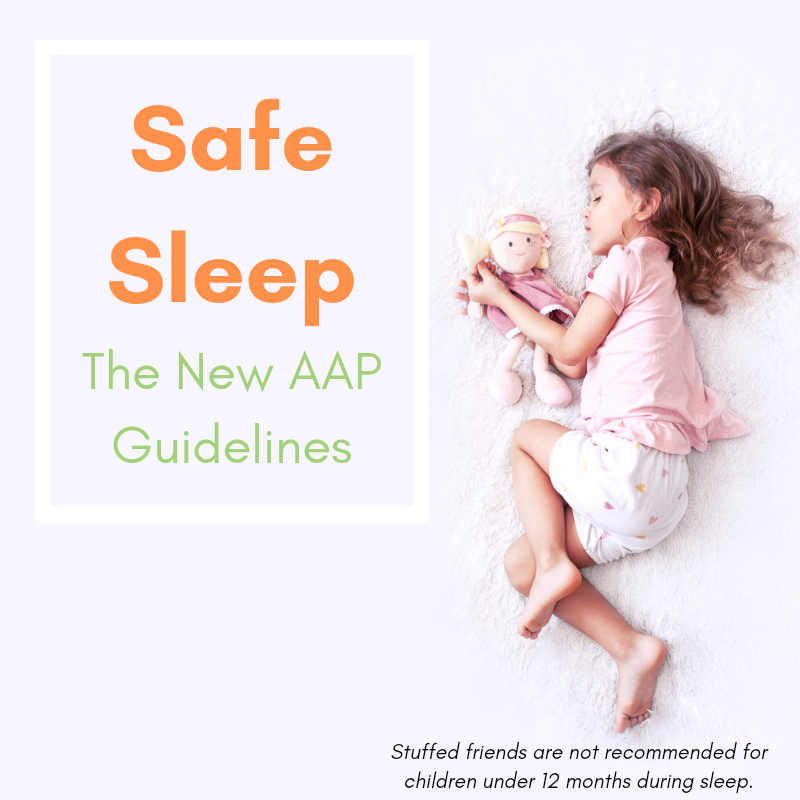Here at Peapod Sleep Consultants we’ve been working hard to digest the American Academy of Pediatrics’ (AAP) new safe-sleep guidelines and recommendations. It’s the first time in SIX years they’ve updated this information, so these new recommendations and clarifications are based on research that’s happened since then and will hopefully help prevent Sudden Infant Death Syndrome (SIDS).
At the end of the day, the lead author of the new policy says keep sleep simple.
“Simple is best. Babies should always sleep alone in a crib or bassinet, on their back, without soft toys, pillows, blankets or other bedding,“ said Dr. Rachel Moon.
While you may have read the new safe-sleep guidelines, you also might have walked away wondering “what’s new here?” Mostly, these updated suggestions provide more specific guidance to clarify earlier recommendations.
What’s new in the new safe-sleep guidelines?
They’re more specific and they’re meant to clarify the earlier recommendations. Here’s the summary:
- Try to share your room- NOT your bed- with baby for six months. While some parents may find bed sharing preferable, according to Dr. Rebecca Carline, co-author of the AAP report, said the evidence is clear that bed sharing increases the risk of a baby’s injury or death.
- Inclined sleepers of any kind are not acceptable for sleep (and the Consumer Product Safety Commission agrees with their new rule banning certain types of inclined sleepers)
- Swaddling is fine for sleep but should be discontinued with the first signs of rolling over.
- Avoid weighted blankets, weighted swaddles or weighted sleep sacks.
- Keep pillows, bumper pads, stuffed animals, blankets or any other types of soft bedding out of baby’s bed.
- Try not to use car seats, bouncers, strollers, carriers, swings and slings for naps or night sleep. If a baby falls asleep in a car seat, they should be transferred to a crib or bassinet as soon as possible. During the first few months of life, a baby doesn’t necessarily have head or neck strength to keep their airway open in one of these products.
- Heart rate monitors and pulse oximeters you can buy in your average baby store are not recommended. The concern is false alarms and that they may provide parents with a false sense of security.
About That Six Month Rooming-In Suggestion
Yes, the guidelines suggest that you keep baby in your room for six months. But, there may be circumstances where it makes sense for your family to move baby to their room sooner. We say this with the knowledge that the greatest risk for SIDS is between one and four months. If you’re so sleep deprived at night that you’re bringing baby into your bed to catch up on sleep, it may be less risky to move baby into their own room than to keep them with you. Before you make any decisions, consult with your pediatrician.
Returning Safe-Sleep Recommendations
The following safe-sleep guidelines remain part of the AAP’s recommendations:
- Place your child on their back to sleep for all naps and night sleep.
- Avoid overheating (68-72 degrees is the sweet spot)
- Breastfeed or provide expressed human milk for six months or more. Editorial note: Fed is best! Please don’t feel any guilt if breastmilk is not a good choice for your family.
- Offer your baby a pacifier at sleep times.
- Avoid smoke exposure, alcohol and illicit drug use.
- Try to work your baby up to 15 to 30 minutes of daily tummy time each day by seven weeks.
If you’re ever in doubt about a particular product, consult the Consumer Product Safety Commission https://www.cpsc.gov/ or the Juvenile Products Manufacturers Association https://www.jpma.org/. If you have questions about any part of the newly revised guidelines, it’s best to consult with your child’s pediatrician.

